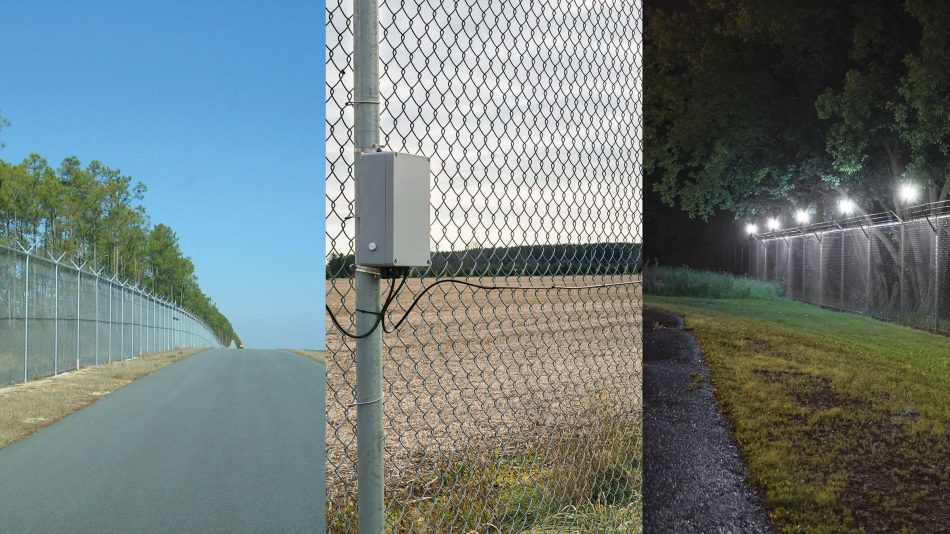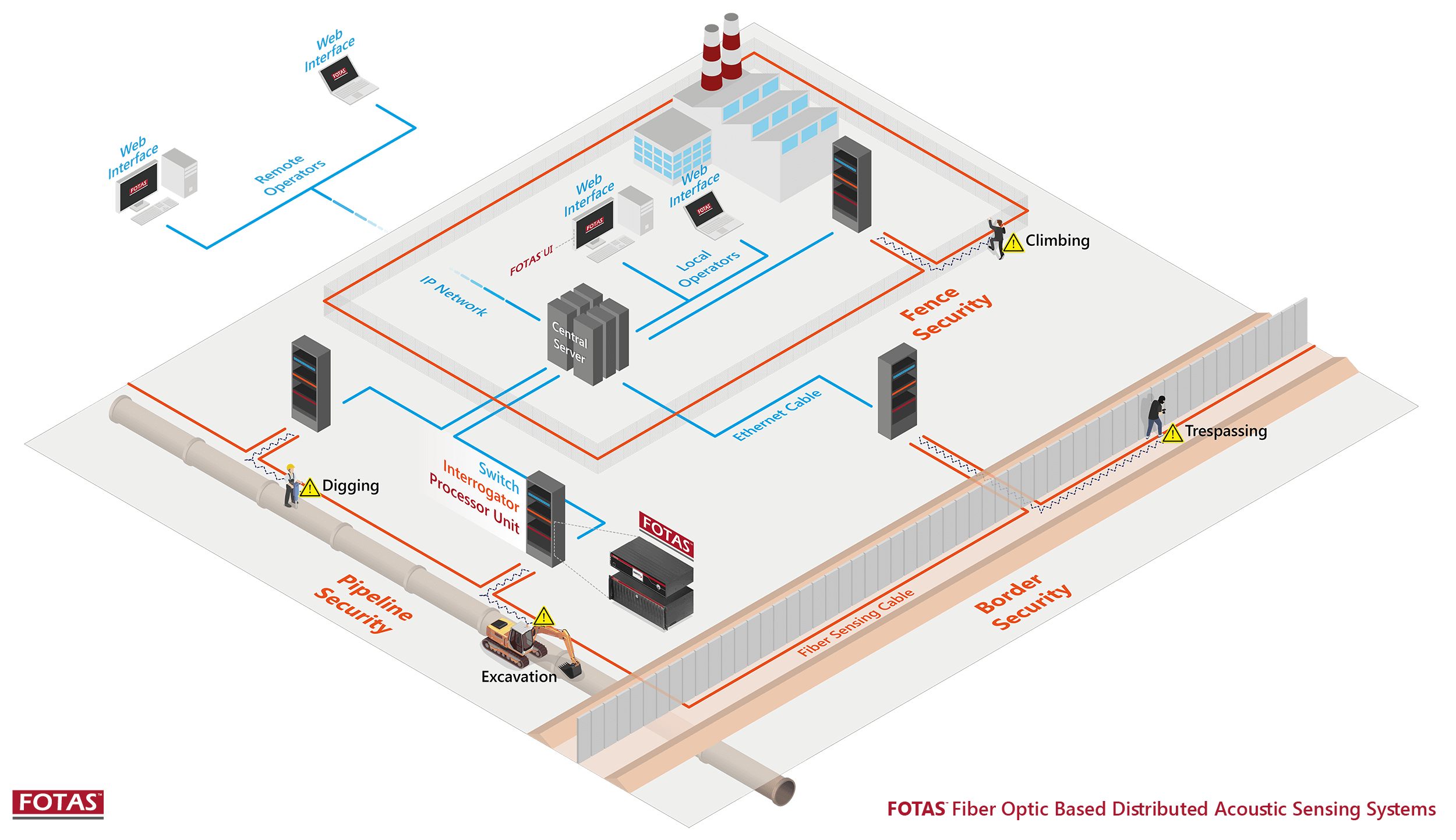Security Fibers: A Durable Solution for Cutting-Edge Security Systems
Wiki Article
The Ultimate Guide to Fiber Optic Security Systems for Your Business
In an age where safety worries are extremely important for services, recognizing the intricacies of fiber optic technology can be transformative. This guide lays out exactly how incorporating fiber optic security systems not only improves data protection but additionally supplies benefits like resistance to interference and real-time monitoring capabilities.Understanding Fiber Optic Modern Technology

The core of a fiber optic cord consists of a slim glass or plastic center, bordered by a cladding layer that reflects light back right into the core. Single-mode fibers are made for long-distance transmission, while multi-mode fibers are appropriate for much shorter ranges, frequently made use of within buildings.
Optical fiber are not only much faster however likewise more secure than traditional circuitry. Their fundamental resistance to electro-magnetic disturbance and the difficulty of tapping right into the signal without detection make them a favored option for companies focusing on information stability and safety and security. As companies increasingly rely upon safe and secure and reliable interaction systems, recognizing fiber optic modern technology becomes essential for informed decision-making.
Trick Benefits of Fiber Optic Safety
When thinking about protection options for a company, the advantages of fiber optic systems are especially engaging. Fiber optic innovation uses remarkable data transmission rates and bandwidth capability, making it ideal for handling high-resolution video clip feeds from surveillance electronic cameras. This ability ensures that safety employees receive real-time information, improving overall response times to potential safety threats.Additionally, fiber optic cables are naturally resistant to electro-magnetic disturbance, which can compromise the integrity of standard copper-based systems. This resistance guarantees that the data sent remains safe and uninterrupted, giving a more reliable safety and security facilities. In addition, fiber optics are much less vulnerable to physical damages, as they are made from glass rather than metal, lowering upkeep prices and downtime.
Fiber optic systems offer enhanced cybersecurity attributes, including security capacities that secure sensitive information from unapproved accessibility. Collectively, these advantages make fiber optic security systems a robust option for businesses looking for to boost their security actions.
Setup Refine and Factors To Consider
Considering the intricacies included, the installation process of fiber optic security systems requires cautious preparation and execution. The initial step involves a comprehensive site analysis to determine optimal places for cabling and devices. This assessment should consider ecological variables, existing framework, and prospective susceptabilities.
In addition, the installment needs to conform with neighborhood building ordinance and industry standards. This might include coordinating with different stakeholders such as building supervisors, IT groups, and protection personnel to make certain smooth integration with existing systems.
Post-installation, rigorous testing is needed to confirm system performance and identify any problems that might develop. By prioritizing these considerations during the installation process, organizations can guarantee a robust and efficient fiber optic safety and security system that meets their details safety demands.
Latest Technologies in Fiber Optic Protection
Current advancements in fiber optic innovation have considerably boosted the abilities of safety and security systems for services. One of one of the most remarkable developments is the integration of fiber optic sensing units that fiber optics infrastructure for security installations can detect vibrations and breaches along the perimeter of a facility. These sensing units give real-time surveillance, making it possible for fast reaction to possible breaches.Furthermore, the development of dispersed fiber optic noticing technology permits for the continuous surveillance of large areas with a single fiber cord. This approach not just decreases installation expenses however additionally improves the reliability of keeping an eye on systems by removing the need for multiple, separate sensors.
Additionally, improvements in multiplexing strategies have actually made it possible for businesses to transmit large amounts of data over fiber optic networks, improving the abilities of video monitoring systems. High-definition video clip feeds can currently be sent out over long distances without loss of top quality, guaranteeing that safety personnel have accessibility to clear and workable details.
Last but not least, the use of man-made knowledge (AI) along with fiber optic systems is transforming threat detection. AI algorithms can examine information from fiber optic networks to identify uncommon patterns or actions, enabling positive safety measures. These technologies collectively stand for a considerable leap ahead in fiber optic protection technology.
Choosing the Right System for Your Service
Picking the suitable fiber optic security system for your service is important for making sure optimum security and comfort. To make an informed choice, assess your particular safety requirements, taking into consideration factors such as the size of your premises, the nature of your procedures, and prospective vulnerabilities.Begin by reviewing the level of protection called for; for example, high-risk settings may demand advanced systems with incorporated security and invasion detection abilities. Next off, think about scalability; as your company expands, your safety system ought to be qualified of increasing to accommodate boosted demands without considerable overhauls.
Additionally, check out the dependability and performance of different systems. Try to find companies with recognized track records and customer testimonies that attest to their service quality. It's likewise recommended to make inquiries concerning the modern technology's compatibility with existing facilities, guaranteeing a seamless integration procedure.
Conclusion
In final thought, fiber optic safety and security systems present a durable service for boosting service security frameworks. The newest innovations additionally bolster the performance of these systems, guaranteeing that organizations stay safe and secure and adaptable in an ever-evolving hazard landscape.Report this wiki page